Company > History >Historical value of the Bernardos slates > Arrival of the English in Bernardos and recovery of activity in the first decades of the 20th century
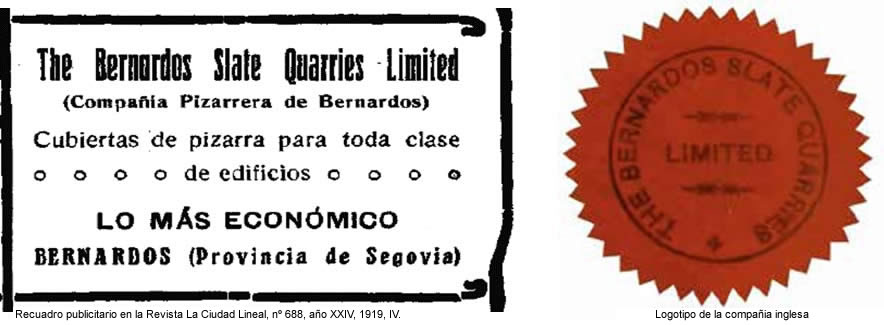
In 1908 the Bernardos municipal authorities were notified that a British representative, Mr Ernest John Catlin had obtained the adequate permits from the civil government in Segovia to acquire a piece of land with the purpose of opening a mine. Thanks to the permits obtained, The Bernardos Slate Quarries Ltd. was constituted in 1909 in London. It was a limited company by shares with a nominal capital of 10,000 pounds, and its directors and major shareholders were Constantine Honeywill and William Ross Honeywill.
That same year, the English company started operating and Edward Thomas Price arrived to take charge. In 1914 a report from the Chief Engineer in the province − which published the Mining Statistics − indicates the following:
“The company operates the quarry by open-air mining, with approximately 25 workers who work 10 hours in the summertime and 8 in the wintertime, and received daily wages of 2.5 and 2 pesetas, respectively. The openpit mining uses a top-down system with a maximum depth of 20 meters and the material is extracted on an incline. The blocks are carried with three manoperated cranes, and are pulled out with a drill and with the use of explosives. On the surface there is an atelier to work on the pieces, containing three sawing tables, and cutting tables with electric engines. The electric energy comes from a factory located in the nearby village and is generated through turbines situated inside the Eresma river. The estimated annual volume of production is 200 tons”.
However, this explanation was not the only one advanced for the protection of works containing slate. In many cases, there was no longer was a sensitivity for the maintenance of the original shape and style which had defined the building in the moment of edification. Similarly, there was no entity to regulate the protection or restoration of these buildings. These factors worked against an activity which had enriched the history of Spanish architecture. Exceptions occurred, since some of the most important buildings were cared for and maintained so that they have survived to this day. For instance, there were resolute attempts to preserve some buildings, as was the case of the monastery of El Escorial, in which various protection and restoration works were undertaken, such as the ones in 1842 during which 50,000 new slate pieces were placed. Nonetheless, there was no solid industry structure at the end of the 19th century in this area and the only possibility was to contract individuals who extracted slate through traditional methods in order to take care of the maintenance works for some of the buildings. In 1901 two local men from Bernardos attended the Provincial Exhibition with a sample of slate of various dimensions. One of them, Mariano Ramos, presented four dozens of pieces in different shapes and sizes.
Little is known of the activity and operations of the English company. They participated in the rehabilitation of the shelter of the mountain pass of Fuenfría, and there are indications that slate from Bernardos was used by various potters from the Zuloaga family to adorn their products. To stimulate the sales of its product, the English company repeatedly published advertisements in a new Madrid magazine called La Ciudad Lineal, which promoted the urbanisation of the famous neighbourhood of Ciudad Lineal in the context of the project led by Arturo Soria.
In 1928 the English company eventually put an end to its activities, and wound up the company, which was then purchased by Spanish owners.
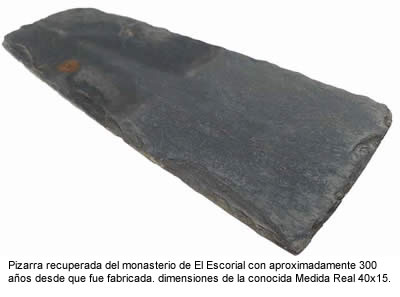
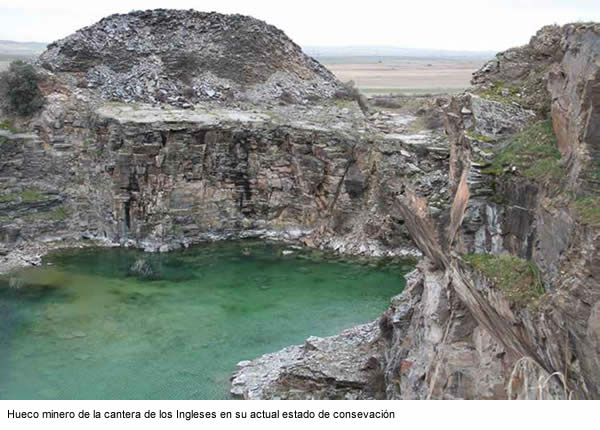
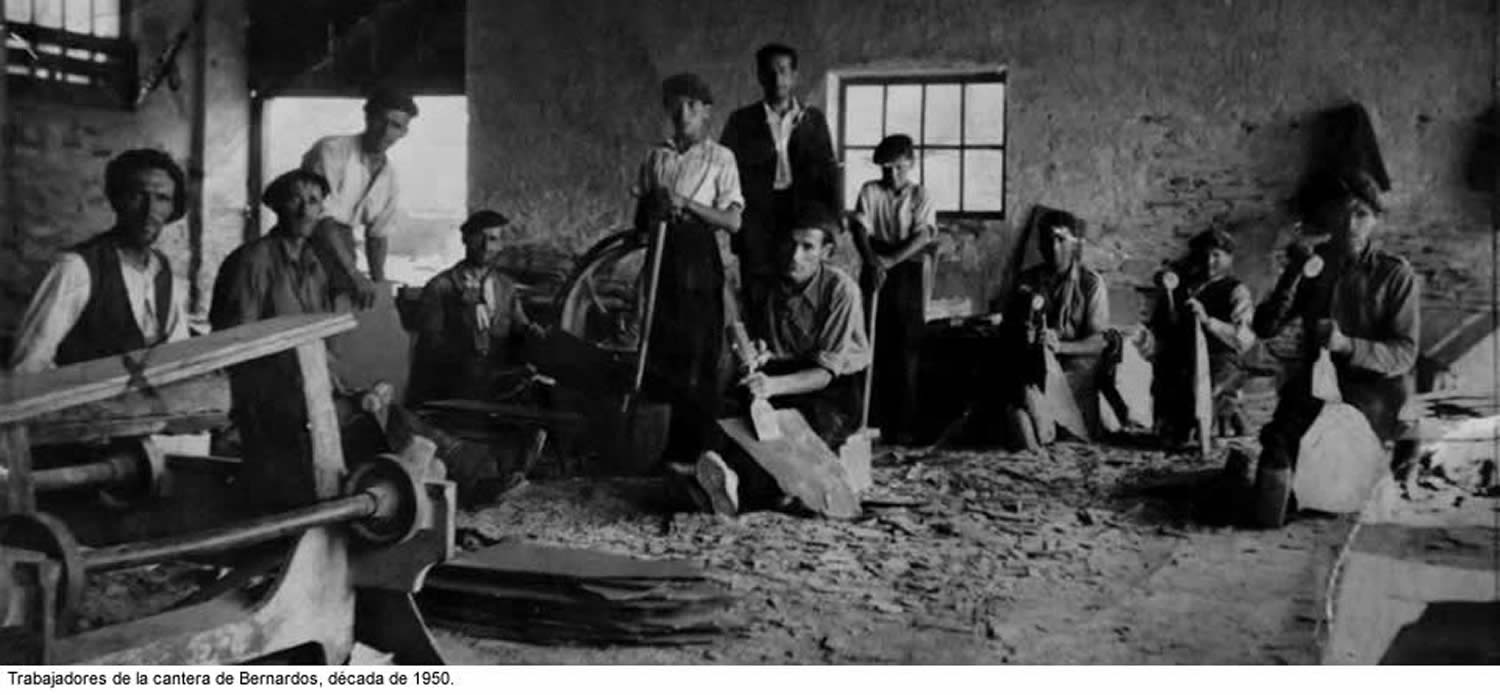
from left to right
1- Sergio Román Torrego (abuelo de José Antonio Román Herranz)
2- Pedro (Padre de Elvira, mujer de Vicentin)
3- “Desconocido”
4- Recorco
5- “Desconocido”
6- Alejandro (Encargado)
7- Ciriaco Sacristán
8- Jesús Gaitero
9- Domingo González
10- Modesto Sacristán
11- Jacinto Román Torrego
In 1928 the English company eventually put an end to its activities, and wound up the company, which was then purchased by Spanish owners.
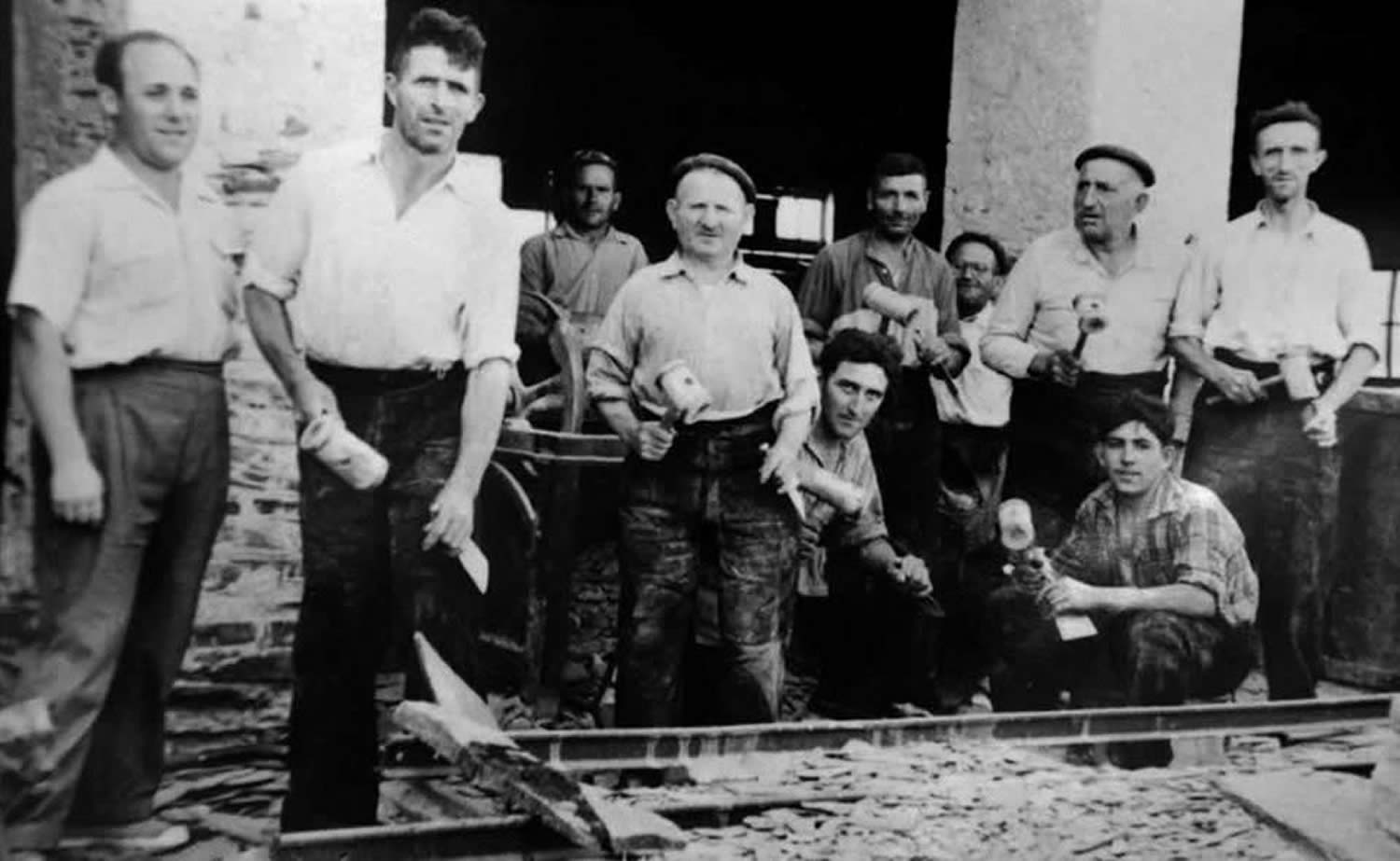
from left to right
1- Luis Calvo Ferrero (fotógrafo)
2- Jacinto Román Torrego
3- Ismael Gaitero
4- Modesto Aragoneses
5- Sergio Román (padre de José Antonio Román)
6- Domingo González
7- Gregorio “El Fotro”
8- Felipe Piquero (padre de Felipin)
9- Julio Román del Río “Vasquillo”
10- Sergio Román Torrego (abuelo de José Antonio Román Herranz)
(40) Rubio Celada, 2004, p. 229.
